John Turner – 10 January, 2016
Scarily, to get across the point that China did not know a great deal about the other Asian nations, Mr Li quoted Donald Rumsfeld, the notorious US Secretary of Defense who promoted the US invasion of Iraq using false evidence linking the government of Iraq with the supply of weapons of mass destruction. “There are things we don't know we know,” Li paraphrased Rumsfeld, “and things we don't know we don't know.” What Rumsfeld, and Li, missed about this concept, as Wikipedia notes, is that part which includes “things we do not like to know.” That, it seems, is the elephant in the room most usually ignored in otherwise rounded discussions about Chinese art and politics.
Beijing
The Second Beijing Photo Biennial and Symposium
15 October - 29 October 2015.
IV
Unfamiliar Asia Friday 16 October session
Wang Huangsheng’s measured introduction acknowledged the kind of problems and contradictions inherent in China’s charm offensive in Asia and the rest of the world. China wants, and is in the process of being seen not just as part of the global community of nations but also as a leader in Asia in cultural as well as economic and political matters.
That this is so was most obvious from the keynote speech of Li Wen, Vice-director of the National Institute of International Strategy, from the Chinese Academy of Social Sciences, who was at pains to emphasise, with statistics and graphs, the sheer size of Asia which is comprised of two thirds of the world’s population.
Scarily, to get across the point that China did not know a great deal about the other Asian nations, Mr Li quoted Donald Rumsfeld, the notorious US Secretary of Defense who promoted the US invasion of Iraq using false evidence linking the government of Iraq with the supply of weapons of mass destruction. “There are things we don’t know we know,” Li paraphrased Rumsfeld, “and things we don’t know we don’t know.” What Rumsfeld, and Li, missed about this concept, as Wikipedia notes (1), is that part which includes “things we do not like to know.” That, it seems, is the elephant in the room most usually ignored in otherwise rounded discussions about Chinese art and politics.
Mr Li’s own list of aspects he wanted to learn about in unfamiliar Asia included life in North Korea, the Indian caste system, and Cambodia’s recent destruction of ancient monuments. (He suggested that it would be beneficial for the whole of CAFAM’s staff to see Cambodia for themselves, as he had recently.) He posited that a more open mindset would benefit the Chinese in their quest to be incorporated into larger Asia, and that spiritual aspects of life were of importance. CAFA and art he saw as “soft power” for the future. He suggested that the 1990s [post-Cultural Revolution] generation needed art and culture, but warned that China should take a different path, free of the ‘pollution’ from the West, as inspiration for artistic activity.
“We are the people who are described by others”, he pointed out, “and with no offense to scholars from the Netherlands (a reference to Bas Vroege), Asians should learn from each other instead of from the West.” Narrowing his focus, he said that the aim is to appreciate the beauty and wisdom of China, and for that art was a most important and promising medium. “Why?” he asked rhetorically. “I will leave that question open for the audience to answer.”
Curiously, while earlier noting that he had spent 20 years studying South Pacific Asia, he admitted to omitting Australia and New Zealand in his research. Among the statistics he quoted were that the total Asian population of around three billion included seven countries of over 100 million people and four with 50 million or more. Asia, he said, mostly had low per capita incomes and was still very much a fragmented ‘continent’ - mainly, he claimed, because the US does not want to see cohesion among the nations. Developing countries were plagued with corruption, he noted, and Asia has the most security problems and threats. North-East Asia, he said, has nuclear and counter-terrorist issues, while South-East Asia faces democratisation plans that mean fighting other countries that threaten them. Thailand’s democracy movement, he noted, had led to military rule. Taiwan and Hong Kong, he claimed, had also suffered harm from their democracy movements.
China, he envisioned, will become the centre and economic powerhouse of the future and can bring long-term peace and stability in Asia. He saw a diversified and harmonious future, with Asian countries not being dictated to by the West but becoming their own masters. The aim is to create a culture and art prosperity [for] a great new Asia. That, he concluded, was his brief overview on Asia.
The next speaker was the photographer, historian and critic, Gu Zheng, from Fudan University in Shanghai. He said he was excited to hear the last speaker’s outline, but it would need five centuries to really have such an Asia. His understanding was that there had been many bad things and good things done in Asia. Why is this period called the “Asian Century” he asked? He then outlined three views of history leading to this, pointing out that Japan, in 1903, was formulating an “Asia is one” concept to challenge the hegemony of the West. He quoted the concept of a “Great Asia” by the founder of the Chinese Republic, Sun Yat-Sen, seeing it as warning to Japan that was ignored, and he raised the issue of comparing the nature and outcomes of Japan’s and China’s revolutions.
I am exploring new thinking, he said, for asking about Asia and what Asian countries think about other Asian countries that are different from them (the “Other”). We need photographs to satisfy our desires, he said, and the lens offers both reality and a fragmentation which is then restructured. The Photo Biennial also fragments and puts the parts together again. It is impossible to find a political or “One Asia”, but its complexity can be shown from these photographs. “I think”, he concluded, “that Asia can not be defined or described, and the more that is attempted the more it becomes mysterious. We still need to stare at Asia with photographs”.
In the following group discussion the panelists mainly talked about their own backgrounds and work, usually pointing out differences they saw between an Asian and Western point of view. Sputniko!, the liveliest speaker, is a part-British part-Japanese performance artist who celebrates cultural hybridisation. She made the point, citing food and customs, that the hybrid can sometimes lead to superior results, presenting for example, certain foods, and Japan’s more innovative celebration of Halloween compared to that of the US.
Liu Xiangcheng (aka Liu Heungshing) a Pulitzer-winning photojournalist, photo historian, and now founding Director of the Shanghai Centre of Photography, emphasised the importance of context by mentioned how an image of his, made in Moscow of people scavenging in a rubbish tip (a universal phenomenon), was widely published to give the (false) impression of a dire food shortage in the then USSR.
V
The theme for Friday’s afternoon syposium was Asia in Art and the keynote speaker, Chun Wai, a lecturer at the University of Hong Kong, emphasised the importance of different religions within Asia, indicating, as did other speakers, (whether ironically or not), the absence of a spiritual dimension to the life and art of Communist China. He specifically mentioned the Catholicism of the Phillipines; the Buddhism of Vietnam, Cambodia and Thailand; Muslim Malaysia, and the Hinduism of South East Asia civilisations. He showed his own photographs of a poor Philipino community that has had to literally live among the dead in a cemetary for several generations. Regarding the male domination of Iran he implied that the Barbie doll is now seen to reflect the freedom of the West (logic forbid).
Bas Vroege, from the Netherlands, was the guest curator of the 1st Beijing Photo Biennial, in 2013, where he dealt with issues of conflict in the world shown in exhibitions outside of the mass media. Vroege presented a segment of Omer Fast’s film 5000 feet is the best as an example of the complexity of reading or understanding conflict situations, and discerning the difference between real and perceived conflict. Fast’s film, loaded with the threat and expectation of violence, ends inconclusively, the site of action as unknown as the reason for the car of a family on an outing to become the target of apparent military surveillance.
“Were the soldiers Asian?” he asked the audience. It wasn’t possible to tell. The film was actually shot in Arizona, but it could have been anywhere. China, he concluded, was taking on global responsibilities. “How to deal with that power is of huge importance to the future of Asia!”
The next speaker, Gilad Ophir, an Israeli now based in New York, noted the huge extent of military activity in Israel and occupied Palestine. His photographs, he said, were visual evidence of the enormous degree of debris the military, as the owner and occupier of so much land, left behind when they moved from place to place.
Malaysian-born Stefen Chow spoke about The Poverty Line, a collaborative project with economist Hui-Yi Lin, as an “attempt to show what it means to be poor, by taking photos of daily amounts of food you can buy if your income lies on the povery line”. It was one of the most memorable exhibitions that I first saw at Three Shadows… in 2012, but not so well presented in a long sloping corridor at CAFA that enticed one to move on rather than stop to study and contemplate. Chow said he felt he was neither East nor West in orientation, but his experience of returning to the West after a brief trip to India had triggered his enquiry into the nature of poverty. Perceptions vary, such as when a Russian audience did not comment on the small quantity, but were most impressed by how fresh the food looked. (Stefen, an accomplished commercial photographer, as well as mountaineer, did not say if the actual food in his photographs was photographed in the country whose poverty line was illustrated.)
Chou Ching-Hui is a Taiwanese photographer who emerged from a backgound in photojournalism to become a disciple of the Cecil B De Mille and Jeff Wall directorial school of figurative art and advertising photography. “Theatrical sets were fabricated against the zoo environment where actors played their assigned roles as photos were taken at dawn and dusk,” the Museum of Contemporary Art, Taipei’s website explains.) Chou’s comments included that he was trying to evoke a sense of memory and belonging, and that the artist becomes omnipotent in an exhibition. Then displayed an image of an interesting pattern of elephant’s dung on the roof of its cage.
With time running out, Yuko Hasegawa briefly summarised the different approaches presented, before participants were bussed to the CIPA Gallery (Red No.1-A2, Caochangdi, Chaoyang District, Beijing) to the opening of From image [or icon] to photograph: Charles Jin’s collection of contemporary Chinese photography.
Charles Jin (aka Charles Jing and Jin Hongwei) was a photo editor with the government run Shanghai Pictorial, established in 1982, before leaving China to study in the US in 1989. He earned an MFA from the Maryland Institute College of Art in 1992 before settling in Atlanta, Georgia, where he became a successful businessman. He began to collect 20th century photographs in 2006, and by 2011, when the first of the exhibitions from his collection was shown, he had over 300 international works. Since then his collection has grown to 2000 works including over 300 contemporary Chinese photographs, from which the SIPA (aka CIPA) exhibition was chosen by Tsai Meng, who works in the Curatorial Research Department of the CAFA Museum. It is too early to say how significant his collection will become (he showed inferior work by Cindy Sherman and Jeff Koons at Three Shadows during the First Beijing Biennial two years ago), but in a country whose supposedly prestigious National Museum in Beijing has no understanding of the importance of collecting and displaying quality vintage photographs, instead of third rate copies, Charles Jin is a rare beacon of light. So too is Three Shadows Photography Art Centre, which continued this theme of presenting original photographic prints in their one-week survey, Chinese photography: twentieth century and beyond. But more on that later.
Jin’s CIPA (or SIPA) Gallery is an offshoot of France’s CIPA Press, founded in Paris in 1973 by the Turkish photojournalist, Gökşin Sipahioğlu (1926 - 2011). Jin was once a contributor to the agency, and helped come to its financial rescue in 2013 by establishing an additional base for them in China. In an apparently typical show of generosity, Jin personally handed out free copies of the From iconography to photography book in which he is credited as Charles Jing, to further confuse readers. This is explained by a visit to Wikipedia which points out that Jin is the correct pinyin spelling of what is Jing in its local dialect. (Visit http://en.cafa.com.cn/from-iconography-to-photography-selected-chinese-contemporary-photographs-from-charles-jins-collections.html)
Our next stop was to a reception and exhibition opening at the pioneering Three Shadows Photography Art Centre in Caochangdi, privately owned and run by Rong Rong and inri. Continuing the theme of presenting original photographic prints, they provided a survey exhibition, Chinese photography: twentieth century and beyond, hosted mainly for the publicity-shy Oracle International Curators Conference - a first for China. Unfortunately, the exhibition was only on for one week. In typical fashion, however, Three Shadows produced a sumptuous book with all of the works well reproduced, plus valuable essays by Wu Hung, Chen Shen and Xu Xijing, Stephanie H. Tung, Li Mei, Gao Chu, Tsai Meng, Huang Jianpeng, Gu Zheng, and Juan I-Jong. Two visits were not enough to really absorb and analyse the content and quality of the work on show, but its essense is certainly captured in the book. Their wall labels, with the all-essential dates, sizes, and medium were superior to those provided at CAFAM which frequently stooped to obvious and useless descriptions such as “colour print”.
The book, Chinese photography: twentieth century and beyond, (ISBN: 978-988-155678-0-2) is not cheap at RMB 800 (c. $NZ 200.00) but it is as essential as Gu Zheng’s indispensible 2011 anthology, Contemporary Chinese Photography for an inside view on Chinese photography. As such, it deserves a separate review (ISBN: 978-0-9562880-6-6).
John B Turner
(1). See Wikipedia, https://en.wikipedia.org/wiki/There_are_known_knowns:
Rumsfeld stated: ‘Reports that say that something hasn’t happened are always interesting to me, because as we know, there are known knowns; there are things we know we know. We also know there are known unknowns; that is to say we know there are some things we do not know. But there are also unknown unknowns - the ones we don’t know we don’t know. And if one looks throughout the history of our country and other free countries, it is the latter category that tend to be the difficult ones.‘
Wikipedia footnotes that the German sociologists Daase and Kessler (2007) agree with a basic point of Rumsfeld in stating that the cognitive frame for political practice may be determined by the relationship between what we know, what we do not know, what we cannot know, but Rumsfeld left out what we do not like to know.
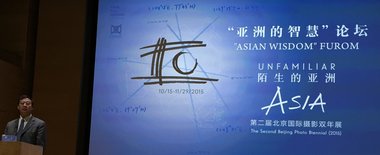
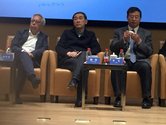
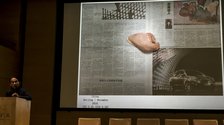

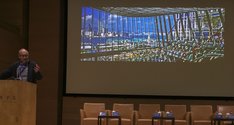

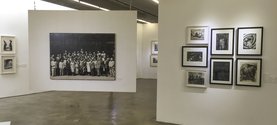
 Advertising in this column
Advertising in this column Two Rooms presents a program of residencies and projects
Two Rooms presents a program of residencies and projects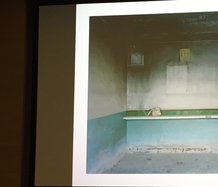

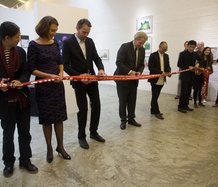
This Discussion has 0 comments.
Comment
Participate
Register to Participate.
Sign in
Sign in to an existing account.